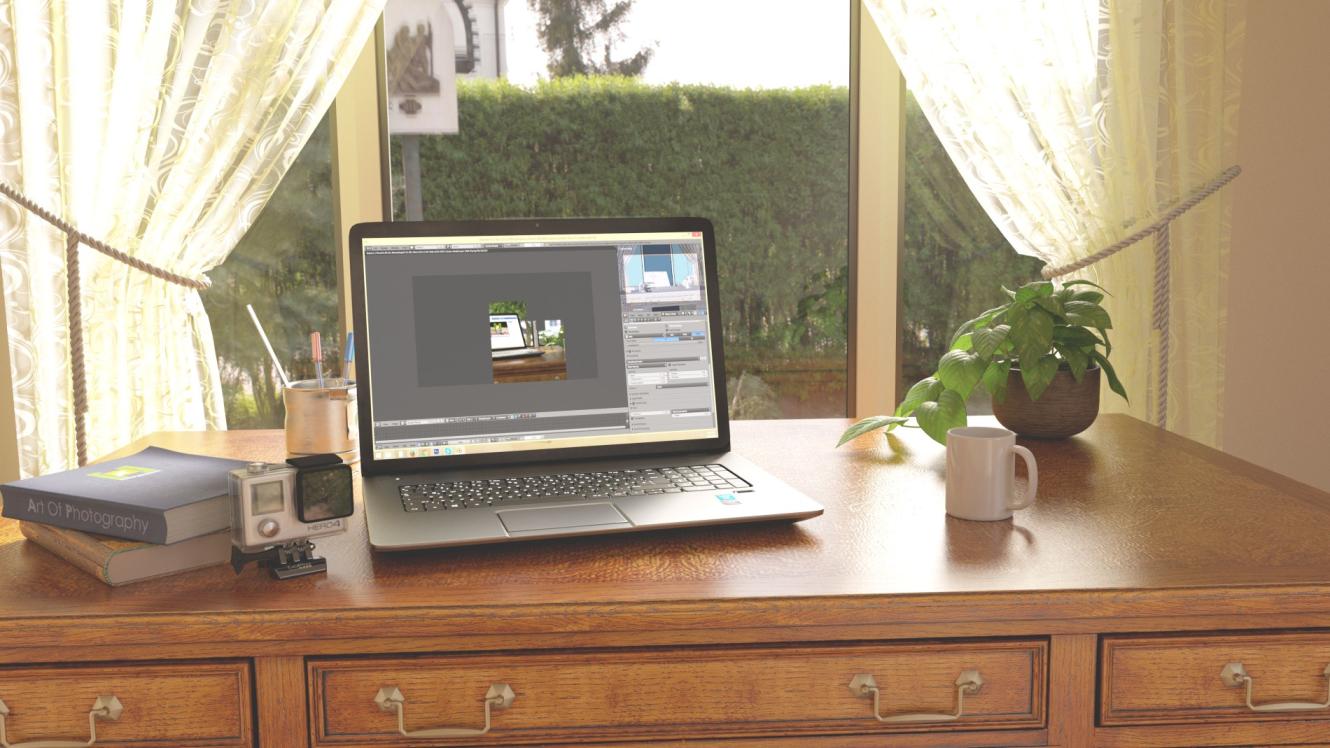
7 Ways to Zen Out Your Desk
7 Ways to Zen Out Your Desk
According to a study conducted by McMains and Kastner at the Princeton Neurological institute, objects in your field of vision can occupy your attention even if you aren’t actively looking at them or thinking about them. In other words, an unorganized desk can take away valuable processing power from your brain and stress you out. We recently published an article that delves into the psychology behind why it can be difficult to keep your workspace tidy, so now we’re going to take it one step further.
Below, we’ll take a look at 7 ways you can reduce distractions and “zen out” your desk. You’ll feel more relaxed and inspired in no time!
1. Keep it simple
This same principle applies to your computer. Looking at your desktop shouldn’t make you feel overwhelmed. Only keep immediately relevant files and folders on your desktop, and implement a digital file organization system. Offload old projects, archival information, and rarely used files onto external hard drives or cloud storage, so they’re not taking up space on your computer, making it difficult to find the things you need for the project at hand, or causing you unnecessary distractions.
2. Add some life
Plants produce oxygen and have been shown to have beneficial effects on the mind. It would be against the spirit of this article to suggest adding plants to your workspace that require a bunch of energy/upkeep, but luckily there are many varieties that will add some life without demanding much of your valuable attention. Consider plants such as succulents, snake plants, spider plants, boston ferns, and dracaena for easy upkeep.
How you pot the plant can also add some life to your workspace; for instance, place a succulent in a terrarium for a little design flair. If you simply swapped out some of the clutter on your desk for a few plants, you’d be well on your way to shifting the feel of your workspace!
3. Be comfortable
This is a surprisingly overlooked factor. Are you comfortable when you’re working? Aches, stiffness, and other physical factors can distract you from the task at hand and reduce your performance. Improvements may be as simple as getting a different chair or changing the type of desk you’re using. For some changes to your workspace, you may need to speak to an office manager or a supervisor, but in the long run, positive changes to your comfort at work benefit everyone. You’re a more effective employee when you feel better, and physical comfort will result in a more relaxed mind.
4. Make it personal
You spend a lot of time at your desk, so make sure that space reflects who you are. Photos of family/friends/loved ones are common, but don’t go overboard and clutter your space all over again. Pick one or two of your favorite images, maybe even a small piece of art, and give them places of honor where they can really stand out and positively affect you in your newly simplified space.
5. Take short breaks
Everyone knows what it’s like to skip lunch and power through the workday without taking any breaks. While most people believe that the more time they spend working, the more things they get done, research suggests otherwise. Periods of uninterrupted work, followed by short breaks, have been shown to increase productivity and memory retention while decreasing stress and fatigue.
Consider adding a small hour glass to your desk to help you keep track of your intervals of uninterrupted work. You could also download software, like focus booster, that will periodically remind you it’s time to take a short break.
6. Color your space
While it may sound a bit silly, color really does affect your mood. According to a study published in Procedia by Yunus, Said, and Jalil: “color is a subtle stimulation with salient impact that has been highly affecting human lives physically, psychologically, physiologically and sociologically every day.” Interior designers consider color the easiest, most impactful thing to change in any project, but for those of us who aren’t masters of Feng Shui, here are some quick tips to consider when choosing colors for your workspace: Blue/Green = calm; red = energy; yellow = happiness.
You could make small alterations such as changing every day objects like trading your black stapler for a blue one or placing solid color art prints your wall.
7. Lighten up
The light in your workspace matters. If it’s too dark, you may experience eyestrain and headaches. While it may not be possible for you to change the overhead lighting in your office, especially if it’s the elementary school florescent kind, you could add a desk lamp that has a warmer color temperature. You could also switch out existing harsh or overly bright bulbs for softer alternatives.
Now, take a deep, relaxing breath, center yourself, and go zen out your desk!
If you're looking for a standing desk for your office or workspace check out our large selection of standing desks.

